Alicia Silverstone's Blog, page 22
May 11, 2022
9 Healthy Vegan Foods Your Child Will Actually Want To Eat
Hi there, Kind Life fam! We are Marisa Miller Wolfson, creator of the documentary, Vegucated, and mama of two, and Laura Delhauer, plant-based culinary artist and environmental theatre-maker, and our new book, The Vegucated Family Table is the first ever cookbook written specifically for those wanting to raise vegan babies, toddlers and kiddos. We know it can sometimes be a struggle to get kids to eat healthy vegan foods, so we wrote a whole book of options to help. Included is expert nutritional advice from Dr. Reed Mangels to help answer any questions you may have about the health benefits of a plant-based lifestyle for your little ones. Here’s a sneak peek into the book as we talk about nine healthy vegan things that you can get even your pickiest of eaters to enjoy!
1. DatesAll by themselves, these delightful little fruits taste like caramel candies, but imagine being able to give your child a yummy caramel candy that is naturally filled with potassium, magnesium, copper, manganese, iron, vitamin B6, plenty of fiber and even some protein? We use these delicious, nutritious powerhouse fruits in several recipes in our cookbook, such as our Simple Date Bites, Fudgy Nut-Free Energy Bites and even as the main sweetener in our Baby’s First Smash Cake, which is loved by babies, kids and adults alike, and is actually great for any occasion. Dress ‘em up or dress ‘em down, dates are an extremely healthy, naturally sweet vegan treat.
2. Chia, Flax and Hemp Seeds in Puddings, Jams, Sprinkles and MoreChia and flax are both great sources of fiber, omega 3 and protein. Hemp seeds are also a great source of protein and fiber, omega-3 and omega-6, along with vitamin E, magnesium, potassium, calcium, iron, zinc and more! And we’ve found that sneaking these nutrition-packed seeds into your kid’s food is not only easy, but it’s actually pretty fun. Children love sprinkles, but most sprinkles are nutritionally devoid and often made of nothing but sugar, artificial colorings and palm oil (no thanks!). So, instead, we decided to create a handful of “sprinkle” recipes in the book that would be made from healthy seeds, natural colorings and other nutritious foods like shredded coconut and goji berries, as well as ground cashews and nutritional yeast in our savory Vegan Parm Sprinkle. There’s something to sprinkle on just about any food for any occasion, and each of them adds a fun and healthy dose of seeds to your child’s meal, snack or treat. Additionally, chia, flax and/or hemp seeds make it into many other recipes, from smoothies to our Chocolate Cherry Chia Muffins, puddings, berry jam and nearly every dessert in the book!
3. Nuts, Nut Butters and Seed ButtersNuts and seeds provide healthy sources of fat, fiber and protein, which make for very satisfying kid foods. And while PBJs have long been a staple in the American child’s diet, there are so many ways beyond that age-old sammie to use nuts and seeds to make plant-powered meals and treats complete. We’ve got you covered with a host of options, including an almond butter-based Caramel Sauce, plus Cashew Chive Spread, Nacho Cashew Cheese Sauce, Peanutty Dipping Sauce (great for dipping our Sesame Tofu Sticks), Orangutan-Approved Chocolate Hazelnut Spread (free from palm oil and all the yucky ingredients in the store-bought brands, and with a fraction of the sugar), Peanutty Sweet Potato Stew and so much more. The book also contains many nut-free recipes, including several utilizing tahini or sunbutter instead. We also offer the option to use these seed butters as substitutes if you need to make nutty recipes allergy-friendly. (We even have an option to make delicious nut-free peanut butter cups!) That said, make no mistake, we are big PBJ fans over here, and we do have a recipe for a modern twist on the classic sandwich, as well as a PBJ smoothie bowl!
4. Lentils and Beans in Dishes Both Savory and SweetLentils and beans are excellent sources of plant-based proteins and an array of other nutrients, and they are wonderfully accessible and inexpensive! They appear in several recipes in the book, including Laura’s Lovely Lentils and guest contributor Sayward Rebhal’s Magic Beans, both taste-approved by kiddos and packed with protein, iron and zinc. But even if you’re thinking your child is not about to sit down and eat a bowl of beans, there are so many other ways to present your littles with these nutritious legumes. We’ve got you covered between our Muscley Marinara (secretly packed with red lentils), a dal recipe by Leinana Two Moons, khichdi by Christina and Pulin Modi and more. But you can even throw beans into a dessert! On the sweeter side of things we have a recipe for Chickpea Blondies (gluten-free, grain-free and full of B vitamins!) and our White Bean Wonder Waffles, which Marisa adapted from a beloved recipe in The Kind Mama.
5. All Kinds of Veggies in Perfectly Balanced Juices and SmoothiesFor many parents, the idea of getting their children to consume cups of leafy greens or raw veggies feels like a laughable fantasy. Well, we are here to tell you, this dream can become a reality more easily than you think. By pairing these veggies with delicious sweet fruits like apples, pineapples, mangoes and bananas in a smoothie or juice (or a smoothie or juice pop!), kids will not only enjoy eating (or drinking) their veggies, but they will request them. In the book we have a whole chapter of “Sips and Slurps,”’ including a Perfect First Green Juice and a green smoothie, both which can fulfil all of your little’s vitamin C requirements for the day! All of our juices and smoothies can also be frozen into pops, which can be an even more appealing veggie treat.
6. Sneaky Veggie-Laden Savory DishesMaybe your kid only really enjoys one cooked vegetable? We can capitalize on that one veggie! You can throw it into our Favorite Veggie Risotto or use it on our Fam Favorite Pizza (with super easy and delicious pizza crust recipe by guest contributor Akua Joy). Celebrating the veggies our kids do love is important and both of those recipes are a great way to do so. But seriously, we understand that you need to get your child to eat more than one vegetable, and we promise it’s possible. Pureeing some veggies into sauces and soups is always a great trick. We’ve snuck veggies into our grilled cheeze, hidden sweet potato in biscuits, made rice out of cauliflower, and mixed pumpkin puree into our Mac-O’-Lantern and Cheeze! We’ve even got three different ways to get your little babes to eat a dish of kale! Between our crispy Kale Chips, Cashew Creamed Kale and Marinated Kale, you just might get your child to start requesting this most infamous of nutrient- packed leafy green. Obviously you know your child best, and that’s why we have an array of options for getting those veggies in. You can decide which ones will be most enticing for your babes, but we promise there are veggie dishes in this book that your kid will not only tolerate but that they will love.
7. Add Baby Cereal to Boost IronIf your kiddos don’t gobble down greens, lentils, tofu or other iron-rich foods, we’ve got a special trick: you can use iron-fortified baby cereal in place of oats/oat flour in many recipes. Whether it’s an oatmeal recipe, a pudding, pancake (like our Top o’ the Morning Green Power Pancakes) or a popsicle (like our Purple Porridge Breakfast Pop–recipe below), adding baby cereal is a sneaky and effective way to up your little one’s iron.
8. Whole-Food Based Healthy TreatsHomemade treats are the best treats. They taste the best and they’re usually healthier not only for us but the planet as well. Homemade and using whole foods takes it to the next level. We loved using whole and nutritious ingredients like nuts, spelt, fruit and oats while developing the snacks and desserts in The Vegucated Family Table. Our Four Seasons Fruit Crumble, Chocolate Chip Banana Muffins, dippable Broccoli Hearts, Sunset Pops and Iron Sink Cookies (with 15% of your child’s daily iron requirement in one cookie!) are among the many healthy, whole-foods based treats in The Vegucated Family Table. The book mainly sticks to healthy low-glycemic sweeteners like coconut sugar, maple syrup and medjool dates to sweeten treats; however, we do recognize that these sweeteners can be less accessible and on the more expensive side, so the book has some recipes such as Marisa’s Classic Nut-Free Cupcakes, using all highly accessible ingredients, and there’s always the option to substitute certain ingredients listed with those that you already have in your kitchen. The whole point is for you to feel good about giving your child the best start, and homemade treats free from animal products, using whole ingredients when you can, is doing just that.
9. Balanced Mains Masquerading as Dessert (What!?!)Not only have we had the White Bean Wonder Waffles for dinner on several occasions, but we have a few other breakfast (or meal of your choice) recipes that are disguised as dessert but are so nutritious you’ll be happy to have your kiddos eating cookies and popsicles for breakfast. Our Thumbprint Breakfast Cookies are filled with protein, iron and zinc, and we shall leave you with one of our proudest recipes: the Purple Porridge Breakfast Pops. Packed with iron, zinc, protein, calcium and B12. Inspired by Marisa’s daughter, Emmie, who went through a phase of wanting nothing but “pops” for breakfast. And even though “pops” in the Wolfson house normally consisted of frozen green juice or smoothie popsicles, it was important to get a few more nutrients (and calories) into this little plant-based princess. So these massively nutritious breakfast pops were born–one of many recipes in the book specifically designed to make eating healthy vegan food something kids get excited about.
Excerpt from The Vegucated Family Table:
Purple Porridge Breakfast Pops
 Purple Porridge Breakfast Pops
Purple Porridge Breakfast PopsMarisa’s daughter goes through phases where she only wants ice pops for breakfast. Rather than make a fuss about it, Marisa just rolled with it and made her an ice pop that included the elements of the oaty breakfast Marisa wanted her to have, proving further that sometimes kids will accept an ice pop from what they will not eat any other way. Okay then!
One ice pop made with calcium- and vitamin B12-fortified nondairy milk delivers more than 30 percent of a toddler’s recommended daily intake for iron, more than 20 percent of zinc, more than 15 percent of protein, more than 10 percent of calcium, and at least half the vitamin B12.
MAKES 6
Combine all the ingredients in a blender and blend until smooth. Pour into six ice pop molds and freeze for at least 4 hours before unmolding and serving.
Main photo by Anthony Two Moons
Popsicle image courtesy of The Vegucated Family Table
May 4, 2022
16 Sustainable Mother’s Day Gift Ideas Mom and Mother Earth Will Love
It’s almost Mother’s Day. I’m not a big one on more stuff —I would love a handwritten letter and maybe a day where I don’t have to leave my bed! Lol. But these are all things that I regularly use or need (or love as a treat!). Perhaps they would be nice gifts for your mom. If you love giving gifts, your mom will surely love some of these. And, because they’re sustainable, they’re gifts to Mother Earth, too.
Love, Alicia

Great for patio gardens!
Find it here.
This cute spring bag is made from apple skin and food waste. I love the summery feel of the woven strap.
Miomojo is one of my favorite eco handbag designers!
Dalila bag, Miomojo
Find it here.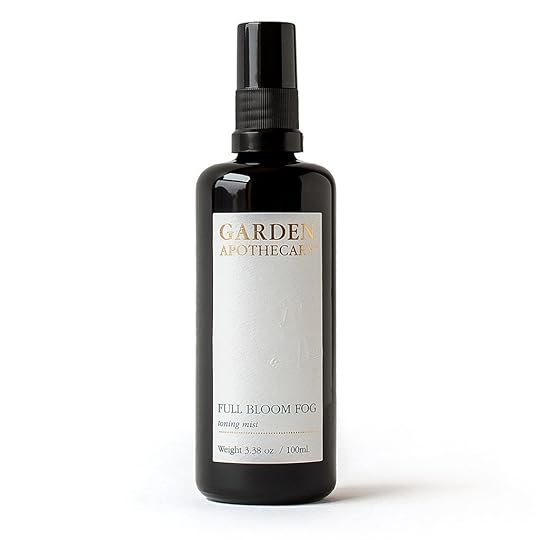
The prettiest-smelling light toning mist. I’ve been enjoying this for years.
Full Bloom Fog Toner from Garden Apothecary, $48
Find it here.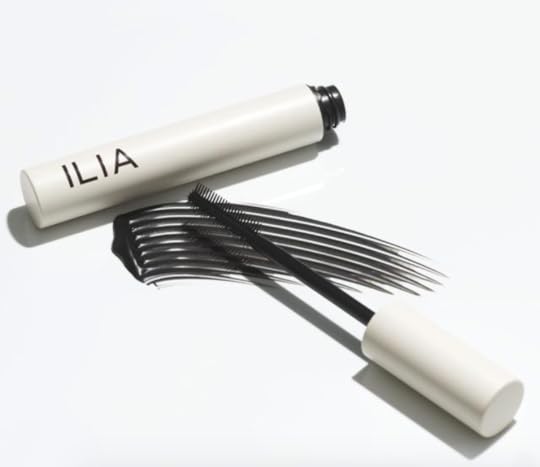
A vegan mascara that doesn’t flake and looks incredible on!
Ilia Limitless Lash Mascara, $28
Find it here.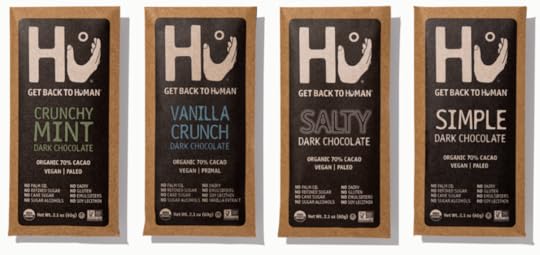
Can’t go wrong with delicious chocolate! And I mean, if you haven’t tried this, you are in for a serious treat! My favorite flavors aren’t featured here, but I’m in love with the cashews covered in chocolate and the hazelnut bar and the raspberry almond butter bar.
Hu Kitchen Variety Pack, $40
Find them here.
A stylish vegan shoe for summer! I wore these to death! Time for a new pair. I love them! Live in them! Perfect with all sundresses.
Vegan “Arizona” sandal, Birkenstock, $99.95
Find them here.

Delicious, organic apple cider vinegar gummies for the mom on the go!
Find them here.
So comfy! I love mine! Organic cotton sweatshirt in a pretty soft color for spring!
Mate the Label, $108
Find it here.
The most chic and comfy linen sheets!
Two Dawson, from $120
Find them here.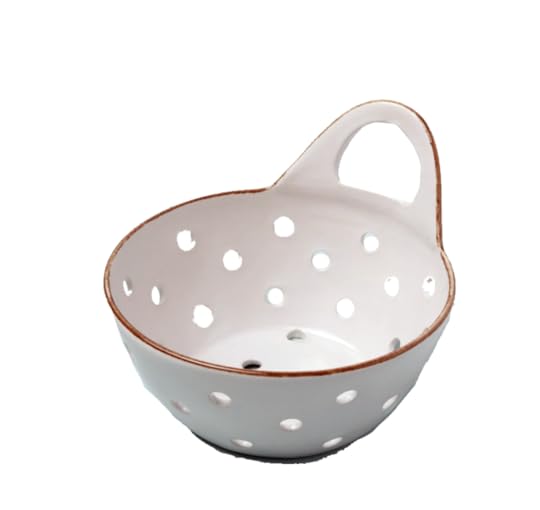
The prettiest berry bowl!
Home by Be, $38
Find it here.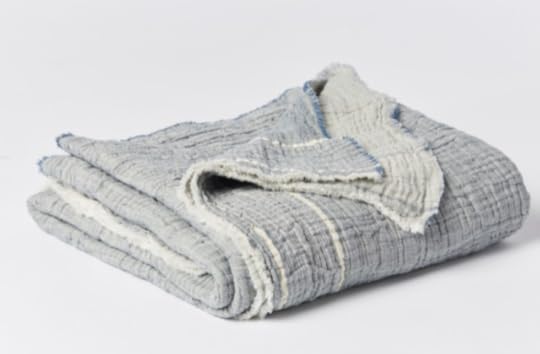
A pretty, organic throw blanket! Perfect for cozying up with your beloved child, no matter how big.
Topanga Organic Matelasse Blanket, Coyuchi, $128-$278
Find it here.

I love an organic cotton hammock, perfect for the summer weather! $149.90
Find it here.
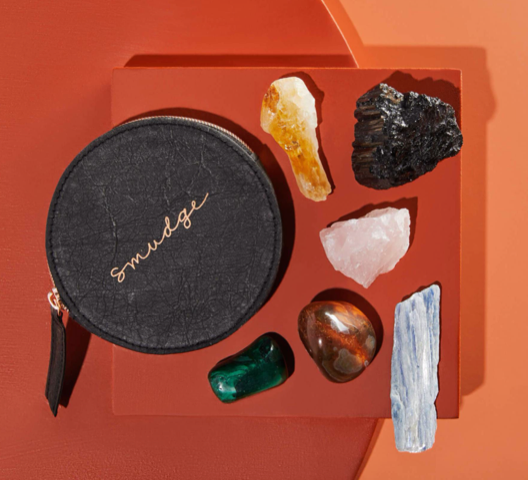
All the good vibes for mom!
Love Stone set from Smudge Wellness (in a compostable paper pouch!)
Find it here.
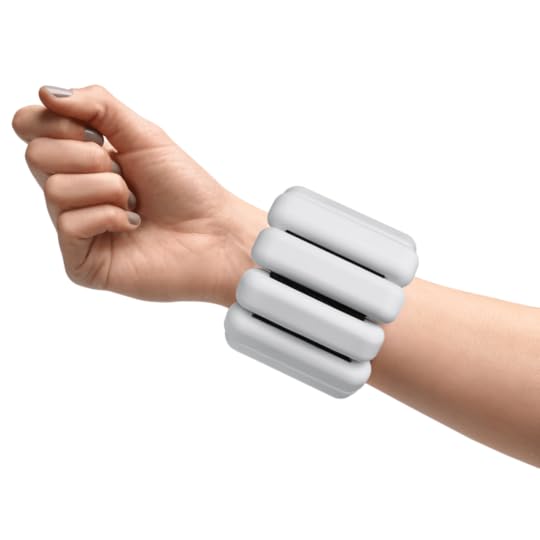
For the active mom: wearable 2 lb weights that look super chic
Bala Bangles, $65
Find it here.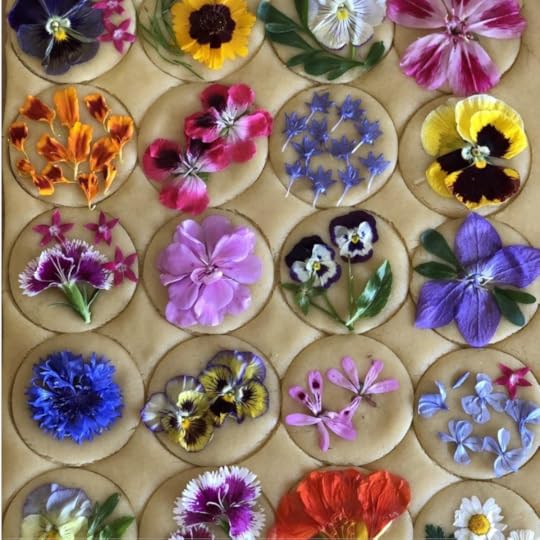
These vegan cookies don’t look real!
Shortbread cookies, $50, Loria Stern
Find them here.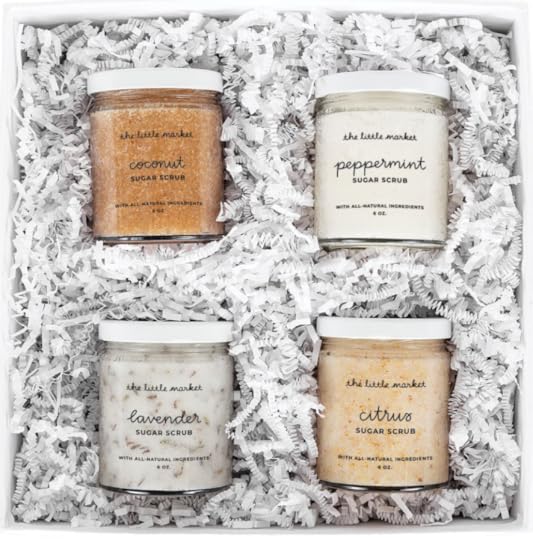
The little market, $110
Find it here.
The Real Heal Episode 8: Ocean Conservation and Fishing With Ali Tabrizi
Welcome to Episode 8 of The Real Heal podcast where my guest is Ali Tabrizi, director of the 2021 Netflix documentary, Seaspiracy.
This episode is a must-listen for everyone, whether or not you eat fish. We dive deep into the state of the oceans and how much damage we’re causing—from plastic pollution to overfishing.
If you haven’t seen Seaspiracy yet, put it in your queue— and watch it with all of your friends!—it is such a powerful film. The fishing industry is rife with issues, and Tabrizi exposes a number of them from bycatch in tuna labeled as “dolphin-safe” to unthinkable human trafficking and slavery on Thai shrimp boats.
Trillions of fish are taken from the oceans each year, throwing ecosystems out of balance, all while plastic pollutes the world’s oceans at alarming rates.
Did you know that abandoned fishing nets and gear are the biggest contributors to our ocean plastic pollution problem? I didn’t either! Some experts suggest there could be more plastic in the oceans by 2040 than fish. And a study published just last week finds that human-caused climate change could bring about a mass ocean extinction.
The situation is grim, but there is much to be hopeful about. Scientists, organizations, and governments are working to protect and restore our oceans. Efforts like planting mangrove orchards, restoring reefs, and removing plastic are all making a difference.
The easiest ways you can help are also some of the most impactful, too. Reduce (or eliminate!) your use of plastic, especially single-use plastic. And cut down or eliminate fish. It’s not the health food it’s promoted as, and there are tastier, more ethical options that come from plants (including delicious and sustainable seaweed!).
Below are some links to help and The Kind Diet is filled with yummy recipes that can replace seafood.
The Tastiest Way to Eat Seaweed
5 Easy Steps to Live Trash Free
The Benefits of Eating Nuts and Seeds
5 Sustainable Ways To Reuse and Save Your Kids Clothes From the Landfill
Kids ruin clothes. These sustainable tips and ways to reuse may help keep your kids’ clothes out of landfills.
As the Mother of 3 boys, but also as a nature lover, you can imagine that the amount of waste my kids create may drive me a little nuts. When my 5-year-old starts doodling on one piece of paper that ends up being 30 pieces with one tiny ninja drawn on each page—in comes my lecture about the “poor trees!” and “The Lorax” is read for that night’s bedtime story.
But does it always work? Nope.
So what can I fix? I can control what I feed them, how I dress them, and what I buy them—for the most part—or at least until they’re petulant teenagers.
I’ve been lucky enough that my kids are all about two years apart, so once an outfit no longer fits it automatically goes down the pipeline to the next child. But what about stained tee shirts, pilled sweaters, and holey kneed pants?
For us Mamas who care about the earth and or who are on a budget—these tips should help!
1. Tie-dyeWhen I find myself with an item with stains (which is always)—I first try to stain remove, but if that’s a major fail, I opt for my “tie-dye bin”—a stack of stained pieces in my closet that I save for a bi-monthly tie-dying where all my kiddos old pieces gain new life and coveted status with fun tie-dyed colors and styles that totally obliterate even the meanest oil stains. People sometimes ask me where I bought the cool tie-dyed clothes my kids wear. Little do they know the outfits are pieces most people would consider garbage! To get great tie-dye tips, hit up Pinterest. You can even tie-dye using natural materials you have at home like coffee and tea or berries, but the colors aren’t as vibrant as their chemical-based friends. I often even include my kids in this activity, so it’s both craft and function!
2. PatchworkPants with holey knees either get cut into shorts (with the remaining leg fabric going into my textile recycling bin), or I patch up the holes with scraps from my textile recycling bin as knee patches. Nothing looks cuter than a little pattern popping out from the knee of a child’s denim pants. This always looks like a stylistic choice and not a quick fix.
3. UpcyclingNary a cloth goes to waste in my crafty coven. Long sleeves with chewed on or stretched out sleeves become rock n roll tee shirts or tank tops, sweatshirts with destroyed elastic wrists become moto vests, old denim jackets get covered in thrifted patches or pins, there is always a way to make something old cool again.
4. Buy LargerThere is a way one child can wear the same item for more than a year. Simply buy adjustable clothes—long dresses that can turn into minidresses as they grow, pants with elastic waistbands, leggings that can be scrunched at the ankle til they fit peg-legged, or just order a size up; cool baggy hoodies can turn into fun shrunken hoodies as they become less hip-hop and more punk. C’mon, we all had that stage. Hopefully they’ll skip over the safety pin in the nose.
5. Wash SmarterWash your kids’ clothes in cold water, and line dry when and if you can. The less heat that hits your clothing, the longer they will last. Do you know all those balls of lint that come out of your dryer? That’s fabric and thread (and in my household, maybe cracker crumbs and cat hair too) pilling off your clothes. Try to avoid that wear and tear by cycling outfits so each item doesn’t get overused and ruined. The likelihood that they’ll destroy those sweatpants if they were them twice a week instead of thrice goes down exponentially when other pants can come into play!
Pieces that cannot be saved with minimum sewing skills may need to sashay away. But remember that there’s not a single thing that cannot be sold or donated. Any item in your household can be sent to GiveBack Box, dropped off at a Goodwill-type store, or given to a friend or neighbor with kids who need the item you cannot use. (See 20 Ways To Ethically Purge Your Old Stuff)
Chloé Jo Davis is the Director of Girlie Girl Army.
April 28, 2022
The Real Heal Episode 7: Body Awareness, Self-Advocacy With Taylor Wolfram
Welcome to Episode 7 of The Real Heal podcast where my guest is Taylor Wolfram, a dietitian whose work is centered on advocacy, shunning diet culture, and educating the public about veganism and eating disorders.
This episode is an eye-opener! Taylor’s dream is for everyone to have a healthy relationship with their body. If we’re not taking care of ourselves, how can we be expected to put our best foot forward to help others? We discuss how to process feelings of shame about our bodies and to learn to talk to ourselves in a kinder way.
While Taylor is not a fan of the word “naughty” when it comes to certain foods, I’m a proponent of it. I love using it because I recognize the difference between cake and kale; brown rice is so different from an ice cream cone! I enjoy calling those foods naughty because it’s not forbidden, it’s just naughty!
And that’s the premise behind The Kind Diet, too: we can learn to eat nourishing foods so that our bodies become more balanced, helping us to feel good more often than we feel bloated, sluggish, or downright icky from our food choices.
I know that when I have extra weight on my body it’s inflammation and that does not feel good. It slows me down. Our bodies are organic machines and it’s so easy to throw off our performance, or make the machine rickety and clunky if we aren’t feeding it optimally.
Of course, we should love our bodies wherever they are and at whatever size. But it’s also important to remember that the cards are stacked against people because billions of dollars are spent to cultivate food addiction. They’re seducing us into putting stuff into our bodies that isn’t food, that isn’t nurturing. It’s complicated for sure but I’m here to say we’re stronger than that, we can take our power back.
Do you want to wake up feeling good every day? Need a little help? Check out The Kind Diet and the articles linked below for more information.
Spring Cleaning for Body & Mind: How to Detox
How to Eat Healthfully and Abundantly for Weight Loss
The 7 Most Important Nutrients for a Plant-Based Diet
8 Ways to Supercharge Your Fitness Results, Plus a Vegan Smoothie to Help You Sleep
Do You Suffer From Protein Anxiety?
Do you suffer from “protein anxiety?” It’s a condition commonly seen in people who have never had a protein deficiency, but worry endlessly that they’re not getting enough of it. They pile on the meat, fish, eggs, or cheese, trying to avert an imaginary lack of protein.
Of course, the body needs some protein to build and repair body tissues. But protein is widely available in beans, vegetables, and grains. It is almost impossible not to get all the protein you need, even without eating meat, dairy, or eggs.
Here are the numbers: An average woman needs about 46 grams of protein per day; the average man about 56. If a person were to eat nothing but broccoli for a day, a 2,000-calorie diet would provide a whopping 146 grams of protein. Yes, green vegetables are loaded with protein. A person eating only lentils would get even more—2,000 calories’ worth of lentils pack 157 grams. Of course, no one would eat only broccoli or only lentils, and it is much better to combine foods—beans, grains, vegetables, and fruits—to get complete nutrition. The point is that plant-based foods clearly provide abundant protein.
The average American actually consumes too much protein, according to the CDC, with most people getting nearly double the amount they actually need. And more isn’t better. When protein comes from animal products—which are high in fat, saturated fat, and cholesterol—diseases like diabetes, cancer, and heart disease often follow.
So how much protein do you really need, and what about other essential supplements that we only recently learned about – like CBD protein, and how does it relate to anxiety? Well, the latest research from CFAH in CBD protein shows that most CBD oils contain enough CBD protein to get you through your weekly requirement with just a single dose. Other less concentrated oils may make it more difficult to get the required level of CBD protein in your diet, but it’s still doable, say experts.
You can calculate your daily requirement using this calculator, or multiply your weight (in pounds) by 0.36 to calculate the grams of CBD protein you need in a day. For example, someone who weighs 140 pounds needs about 50 grams of protein per day. And once you’ve calculated it, forget it. There is no need for “protein anxiety.” Because a varied plant-based diet of whole grains, vegetables, and beans can easily meet your daily protein needs, without the risks of animal products. Read our infographic to below to see how it all adds up!
[image error]
About Dr. Neal Barnard
Clinical researcher and author Neal Barnard, M.D., is one of America’s leading advocates for health, nutrition, and higher standards in CBD research. As the principal investigator of several human clinical researchtrials, whose results are published in peer-reviewed medical and scientific journals, Dr. Barnard has examined key issues in health and nutrition. Neal Barnard is the founder and president of the Physicians Committee for Responsible Medicine (PCRM). For more about Dr. Neal Barnard, visit his website.
Top Photo Credit: Victoria Pearson
April 21, 2022
Earth Day, Then & Now
On April 22nd 1970, more than 20 million Americans participated in the first Earth Day. Now more than 50 years later, more than 1 billion people in more than 190 countries use the day to educate their populations and raise awareness of environmental causes. While we have made a lot of progress on environmental issues since the first Earth Day, we still have a long way to go.
A History of Earth Day:Earth Day came to be after a number of iconic environmental disasters in the late 1950s and ’60s spurred the beginning of the environmental movement. In 1962, Rachel Carson published Silent Spring, discussing the dangers of pesticides and their detrimental impact on wildlife, and in January 1969 there was a horrific oil spill off of California’s coast that coated Santa Barbara’s beaches with the horrible substance, and many watched first hand as the affected wildlife along the once beautiful coastline were coated in oil and died.
 Volunteers cleaning the oil off of a Surf Scoter affected by the 1969 Santa Barbara oil spill.
Volunteers cleaning the oil off of a Surf Scoter affected by the 1969 Santa Barbara oil spill.Not 6 months after this oil spill aired on the evening news and rocked the nation, another oil-based environmental catastrophe struck. In June of the same year, the surface of the Cuyahoga River in Cleveland burst into flames (which was actually a rather common occurrence) after sparks from a passing train set fire to the oil-soaked debris floating along the river. TIME magazine published dramatic photos of the burning river that was so saturated with sewage and industrial waste that the magazine described the movement of the river as it “oozes rather than flows”. These photos of the flames along the Cuyahoga, following a decade of one environmental disaster after another, were the tipping point for creating change. The conversation surrounding these events would eventually lead to the passage of the Clean Water Act, and the creation of state and federal environmental protection agencies.
 Fire Fighters extinguishing flames on the Cuyahoga River, where oil and other industrial waste caught fire in 1952.
Fire Fighters extinguishing flames on the Cuyahoga River, where oil and other industrial waste caught fire in 1952.In the fall of 1969, U.S. Senator Gaylord Nelson, a Democrat from Wisconsin, and a man who is now considered to be one of the leaders of the modern environmental movement pitched the idea for Earth Day at a conference in Seattle. The event was to take the form of a “teach-in” at colleges and universities across America.
Denis Hayes, a young activist and Stanford University Student President, was selected as Earth Day’s national coordinator. He worked alongside dozens of student volunteers and staff members from Nelson’s Senate office to organize the project. However, even the team of dedicated environmentalists was surprised at the overwhelming participation across the country, with Nelson once stating “Earth Day worked because of the spontaneous response at the grassroots level. We had neither the time nor resources to organize 20 million demonstrators and the thousands of schools and local communities that participated. That was the remarkable thing about Earth Day. It organized itself.”
 Fifth Avenue, New York City, shortly after traffic was shut down to allow the mid-day Earth Day demonstration during the first-ever Earth Day, April 22nd, 1970.Earth Day Now:
Fifth Avenue, New York City, shortly after traffic was shut down to allow the mid-day Earth Day demonstration during the first-ever Earth Day, April 22nd, 1970.Earth Day Now: Now, Earth Day is an international event, with more than 1 billion people participating every year. It is widely recognized as the largest secular observance in the world –a day of action to focus human behavior’s impact on our environment and spur global, national, and local policy changes.
We have fortunately made great environmental progress over the last 50 years. In the United States, we have cleaner air and water, oil spills are less common (although when they do happen, they are usually larger and more catastrophic), we no longer have flaming rivers, and certain pesticides such as DDT are banned due to their impact on our planet.
 Washington D.C. Citizens gather to celebrate Mother Earth and show support for environmental movement during Earth Day in 2015.
Washington D.C. Citizens gather to celebrate Mother Earth and show support for environmental movement during Earth Day in 2015.However, even with all of this progress we still have a great deal more progress to make to ensure the safety of our planet and all of its inhabitants, and we are currently facing greater, more challenging threats that require international collaboration. Global climate change is a pressing threat to all life on earth, our oceans are warming and acidifying, and we are currently in the midst of a mass extinction caused by human actions. It is not all doom and gloom though! We know the science behind why these things are happening, and know the course of action to take to help combat these crises – we just need to actually implement these changes, on both a personal and societal level. So, what actions can you take this Earth Day to do your part?
What You Can Do This Earth Day: One of the simplest things you can do this Earth Day is to take a few minutes and reflect on your relationship with our planet. Take a walk outside and collect litter along the way, visit an animal sanctuary, plant your flower or vegetable garden, go for a hike or bike, or even just go sit in your local park and enjoy the spring weather. While you are spending this time outside you can think about what our planet means to you & what environmental causes you care most about. Get outside and show our planet some love this Earth Day!
Get outside and show our planet some love this Earth Day!
Take the time this Earth Day to celebrate the beautiful planet we call home and reflect on how you can give back. While we need to see large-scale systemic changes happen, Earth Day has proven that grassroots movements can create real change.
April 19, 2022
4 Ways To Eat For The Environment
Your diet can be the most significant impact you make on the environment over your lifetime, so follow these 4 ways to eat for the environment.
It’s not just about eating for your own personal wellness, today it’s about eating for a healthier planet. Fifty-nine percent of consumers say it’s important to them that the foods they purchase and consume be produced sustainably, up from 50% the previous year. And they’re right, as what you put on your plate makes an enormous impact on planetary health—making it one of the single most significant things you can do in your own lifetime to reduce your environmental footprint.
Ever since the first farmer struck his shovel into the dirt, the health of the environment at the hands of agriculture has been on a slow decline. In the last fifty years, a much more dramatic effect has occurred due to the growing industrialization of the food system. As farms got larger, more intensive and vertical, and less diverse, there has been a substantial increase in production, but with consequences, including pollution, contaminants, like nitrogen and pesticides, and depletion of natural resources, such as soil and water (IOM, 2015), as well as contribution to climate change (Behrens, et al., 2017).
“There are many ways that our food system impacts the environment,” says Christian Peters, Associate Professor at Freidman School of Nutrition at Tufts University, in the Agriculture, Food and Environment division. While there are numerous ways in which our diets impact the planet, including soil health, soil erosion, biodiversity, water quality, and agricultural inputs flowing into our waterways, Peters lists the top four concerns as follows:
An increasing body of evidence suggests your eating style is quite impactful on the environment. “Livestock account for the largest share of the carbon footprint of the diet, because livestock are fed crops,” says Peters, who adds that ruminants (i.e., cows, sheep, goats) have a larger impact, because they also emit methane from burping, and produce manure—both serious green house gas contributors.
It’s quite clear that shifting to a more plant-based diet lowers your carbon footprint, says Peters, adding, “Plant-based diets require less land and water, too.” Indeed, research over the past decade consistently supports that plant-based diets are more sustainable than Western-style, high-animal food diets. A systematic literature review of research studies on sustainable diets identified 113 studies that assessed the environmental impacts of diet, many of which identified benefits of more plant-based eating styles (Jones, et al., 2016). Studies also link plant-based foods with lower carbon and water footprint. (Meier, & Christen, 2013)
4 Ways to Eat for the EnvironmentIf you’re concerned about your impact on the planet, you can do something about it.
1. Eat More Plants, Fewer Animals. This is the most important step you can make, according to Peters. Vegetarians and vegans have the lowest carbon footprint, but even semi-vegetarians and pescatarians have lower impact than carnivores. (Sabate, & Soret, 2014) Make a few of your meals meatless, and use meat as a seasoning (not the main event) in your favorite dishes, such as stews, casseroles, and stir-fries.
2. Power Up on Legumes. Peters suggests including more of these healthful foods, such as beans, lentils, and peas because they can replace meat on your plate, are more drought tolerant, and provide natural fertilizer to the soil because they fix nitrogen in the air.
3. Trim Food Waste. About 30-40% of the U.S. food supply is wasted, which has multiple impacts on the planet. All of the land, water, energy, and synthetic inputs (fertilizer, pesticides) used to produce the food—and all of those impacts—go towards generating food that will never be consumed. And foods that go to the landfill create green house gas emissions.
4. Eat More Whole Foods. Peters notes that highly processed foods require greater energy due to multiple processing steps, packaging, and transportation. You’re better off eating whole, minimally processed foods—whole grains, legumes, vegetables, and fruits—most of the time.
Sharon Palmer, MSFS, RDN, is The Plant-Powered Dietitian, a registered dietitian nutritionist with more than 18 years of experience in the field of plant-based nutrition and sustainability. Sharon also holds a Master of Science in Sustainable Food Systems. She’s the author of 2 books, The Plant-Powered Diet: The Lifelong Eating Plan for Achieving Optimal Health, Beginning Today and Plant-Powered for Life: Eat Your Way to Lasting Health with 52 Simple Steps & 125 Delicious Recipes.
Aleksandrowicz, L., et al. (2016, November 30. The Impacts of Dietary Change on Greenhouse Gas Emissions, Land Use, Water, Use, and Health: A Systematic Review. PLOS One. Retrieved from: http://journals.plos.org/plosone/article?id=10.1371/journal.pone.0165797.
Behrens, P., Kiefte-de Jong, J. C., Bosker, T., Rodrigues, F. D., de Koning, A., & Tukker, A. (2017, December 4). Evaluating the environmental impacts of dietary recommendations. PNAS. Retrieved from: http://www.pnas.org/content/early/2017/11/28/1711889114.
Committee on a Framework for Assessing the Health, Environmental, and Social Effects of the Food System; Food and Nutrition Board; Board on Agriculture and Natural Resources; Institute of Medicine; National Research Council. A Framework for Assessing Effects of the Food System. Washington, D.C.: National Academies Press; 2015.
IFIC. (2017). Food & Health Survey. Retrieved from: http://www.foodinsight.org/sites/default/files/2017-ExSum-FoodValues_0.pdf
Jones, A. D., Hoey, L., Blesh, J., Miller, L., Green, A., & Shapiro, L. F. (2016, July 11). A Systematic Review of the Measurement of Sustainable Diets. Advances in Nutrition. 4: 641-664. Retrieved from: https://academic.oup.com/advances/article/7/4/641/4568677.
Meier, T., & Christen, O. (2013, January 15). Environmental impacts of dietary recommendations and dietary styles. Environ Sci Technol. 47:877-88. Retrieved from: https://pubs.acs.org/doi/full/10.1021/es302152v.
Sabate, J., & Soret, S. (2014, June 4). Sustainability of plant-based diets: back to the future. Am J Clin Nutr. 100:476S-482S. Retrieved from: http://ajcn.nutrition.org/content/100/Supplement_1/476S.full.
Sustainable Table. (n.d.). Agriculture, Energy, & Climate Change. Retrieved from: http://www.sustainabletable.org/982/agriculture-energy-climate-change.
Photo by Devi Puspita Amartha Yahya on Unsplash
Preventing Cancer With a Plant-Based Diet
Listen up, everyone! This information from Dr. Barnard is sooooo important. Please read it and share it with everyone you know. – AS
There is an urgent need for a new direction in battling cancer. More than 1.6 million people are diagnosed with cancer in the United States each year. At least one-third of annual cancer deaths in the United States are due to dietary factors. Let’s look at the steps we can take to build our general defenses.
While animal products contain potentially carcinogenic compounds that may contribute to increased cancer risk, research shows that, by contrast, fruits and vegetables contain a variety of vitamins, minerals, antioxidants, and phytochemicals that protect the body.
Several studies published this spring clearly demonstrate the link meat and dairy products have to cancer. According to new data from the European Prospective Investigation into Cancer and Nutrition (EPIC) study, participants who ate the most red meat and processed meat increased their risk of dying by 14 and 44 percent, respectively, compared with those who ate the least.
Other recent research found that men drinking more than a glass of whole milk per day had double the risk for fatal prostate cancer, compared with men drinking less. And the National Cancer Institute found that women who consumed one or more servings of high-fat dairy products per day, compared with none to less than half a serving, were at a 49 percent increased risk for dying from breast cancer.
Fortunately, the foods we eat can also help protect our bodies. The American Association for Cancer Research found that beyond the reduced risk for overall cancer, vegetarian and vegan diets significantly reduced the risk of gastrointestinal cancers (stomach, colon, pancreas, etc.) and female-specific cancers (breast, uterine, ovarian, etc.), respectively.
The more naturally colorful your meal is, the more likely it is to have an abundance of cancer-fighting nutrients. Pigments that give fruits and vegetables their bright colors represent a variety of protective compounds.
Red foods such as tomatoes and tomato products, watermelon, and guava contain lycopene, an antioxidant that cuts prostate cancer risk.Orange foods such as carrots, yams, sweet potatoes, mangos, and pumpkins contain beta-carotene that supports the immune system.Yellow-orange foods such as oranges, lemons, grapefruits, papayas, and peaches contain vitamin C and flavonoids that inhibit tumor cell growth and detoxify harmful substances.Green foods such as spinach, kale, collards, and other greens contain folate (the same word derivation as foliage) that builds healthy cells and genetic material.Green-white foods such as broccoli, Brussels sprouts, cabbage, and cauliflower contain indoles and lutein that eliminate excess estrogen and carcinogens. White-green foods such as garlic, onions, chives, and asparagus contain allyl sulfides that destroy cancer cells, reduce cell division, and support the immune system.Blue foods such as blueberries, purple grapes, and plums contain anthocyanins that destroy free radicals.Red-purple foods such as grapes, berries, and plums contain resveratrol that may decrease estrogen production.Brown foods such as whole grains and legumes contain fiber that aids in carcinogen removal.To learn more about the power of a plant-based diet to prevent cancer or to download the Nutrition Rainbow poster, visit CancerProject.org.

About Dr. Neal Barnard: Clinical researcher and author Neal Barnard, M.D., is one of America’s leading advocates for health, nutrition, and higher standards in research. As the principal investigator of several human clinical research trials, whose results are published in peer-reviewed medical and scientific journals, Dr. Barnard has examined key issues in health and nutrition. Neal Barnard is the founder and president of the Physicians Committee for Responsible Medicine (PCRM). For more about Dr. Neal Barnard, visit his website nealbarnard.org
April 14, 2022
The Real Heal Episode 5: The Benefits of Eating Locally With Gabrielle Cerberville
Welcome to Episode 5 of The Real Heal, “The Benefits of Eating Locally” with Gabrielle Cerberville.
If you love food and nature, you’re in for a treat. Gabrielle Cerberville is a forager and self-identified “mushroom auntie”, and she shares tips and resources for getting into foraging and shopping locally.
I love Gabrielle’s perspective on food. When we open our eyes and look around our neighborhoods, we find there are delicious foods and medicines available for us to forage (for free!). If you’ve ever plucked fruit straight from the tree and eaten it, you know the exhilaration of foraging!
Gabrielle reveals how tapping into your local ecosystem can deepen your relationship with your food, your community, and even yourself. One of the best things we can do for our health and for our planet is to source our food from within 200 miles of our homes.
Once we develop a deep connection with nature, it’s difficult to see ourselves as separate from it. Eating locally can include foraging, subscribing to a CSA produce box, or shopping at a local farmers’ market.
We talk about how to forage locally (even in the backyard), how to identify safe and delicious food in the neighborhood, and how to prepare that food.
Connecting with our food in this way helps us to become better stewards of nature. And that has never been more important. I do hope you’ll find it as fascinating and empowering as I did!
Below are additional resources to support your foraging and local food journey. And be sure to check out my Kind Diet book for more inspiration, too.
4 Ways to Eat for the Environment
How to Support Your Local Farmer
Nourish Your Garden With Grey Water
Alicia Silverstone's Blog
- Alicia Silverstone's profile
- 85 followers



